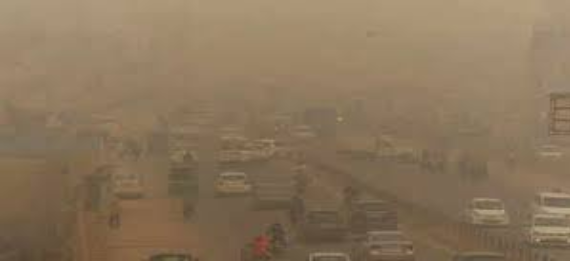Day after Diwali, Delhi’s air quality in ‘very poor’ category; AQI at 323.

With winters setting in, cities in north India face a mammoth challenge of tackling air pollution every year. This challenge becomes bigger around Diwali. Even as crackers remained banned and the Supreme Court refused to hear a plea last week, which challenged the restrictions as it stressed – “Let people breathe clean air”, the National Capital Region (NCR) saw multiple violations on Diwali night. This expectedly made the air unbreathable.
Last year, the top court held marathon hearings on air pollution as the NCR remained choked in these months and states involved – as well as the Centre – were pushed to find solutions.
On Tuesday morning, across more than 40 monitoring stations listed on the government website showing the National Air Quality Index, most in the national capital registered the AQI (air quality index) dropping in the “very poor” category (AQI between 301-400) which can cause “respiratory illness on prolonged exposure”. This means that the air quality is just one step away from getting “severe” (401-500), which “affects healthy people and seriously impacts those with existing illnesses”.
Ahead of Diwali, Delhi was ticked off the list of most polluted Asia cities. After saying that the city worked very hard to reach here, Chief Minister Arvind Kejriwal – in another tweet on Monday – stressed: “Some people (are) asking -have we won the war against pollution, am I satisfied? Not at all. It is encouraging that we are no longer the world’s most polluting city. It encourages us that we are on the right track. However, we hv to become the world’s cleanest city. That’s our goal.”
Mumbai: In the financial capital of India, the air pollution levels were said to have shot up to dangerous levels as firecrackers went off across the city over the weekend. HT noted in a report that particulate matter concentrations settled at the highest since January. On Tuesday morning, while most stations – listed on the Central Pollution Control Board (CPCB) website – were in the “moderate category” with the AQI below 200, the air quality was in the “poor category” with AQI above 200 at Malad West and Deonar stations.
Bengaluru- In the state capital of Karnataka, while at most stations, the AQI ranged between “moderate” and “satisfactory”, it stood in the “poor” category at the Silkboard monitoring station.
Chennai – For Tamil Nadu’s capital, a majority of stations recorded AQI in the “poor” category. However, only Kodungaiyur station was where the air quality was recorded to be in the “moderate” category.
Kolkata – Delhi has a reason to envy the Bengal capital where the AQI across most monitoring stations was in the “good” category.









